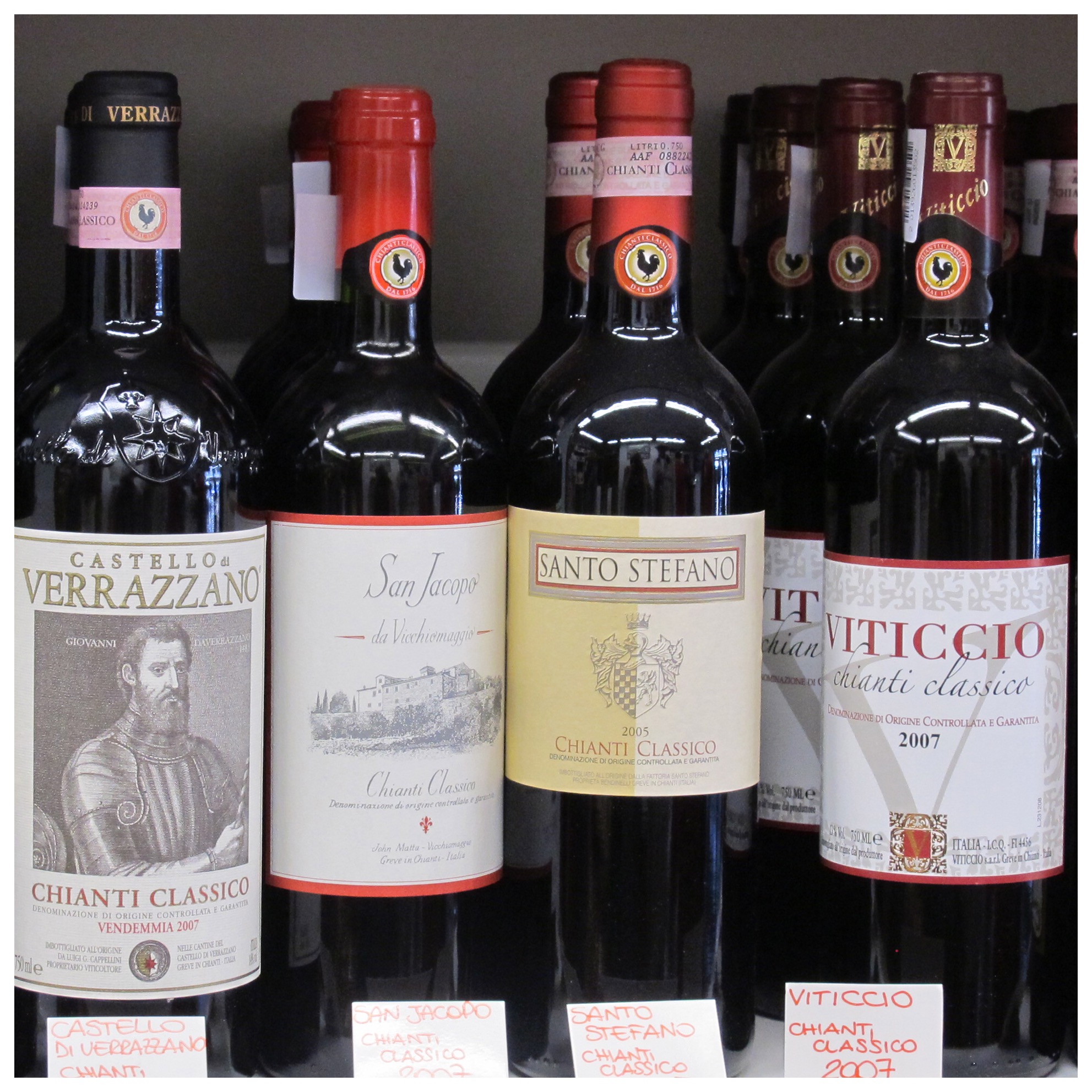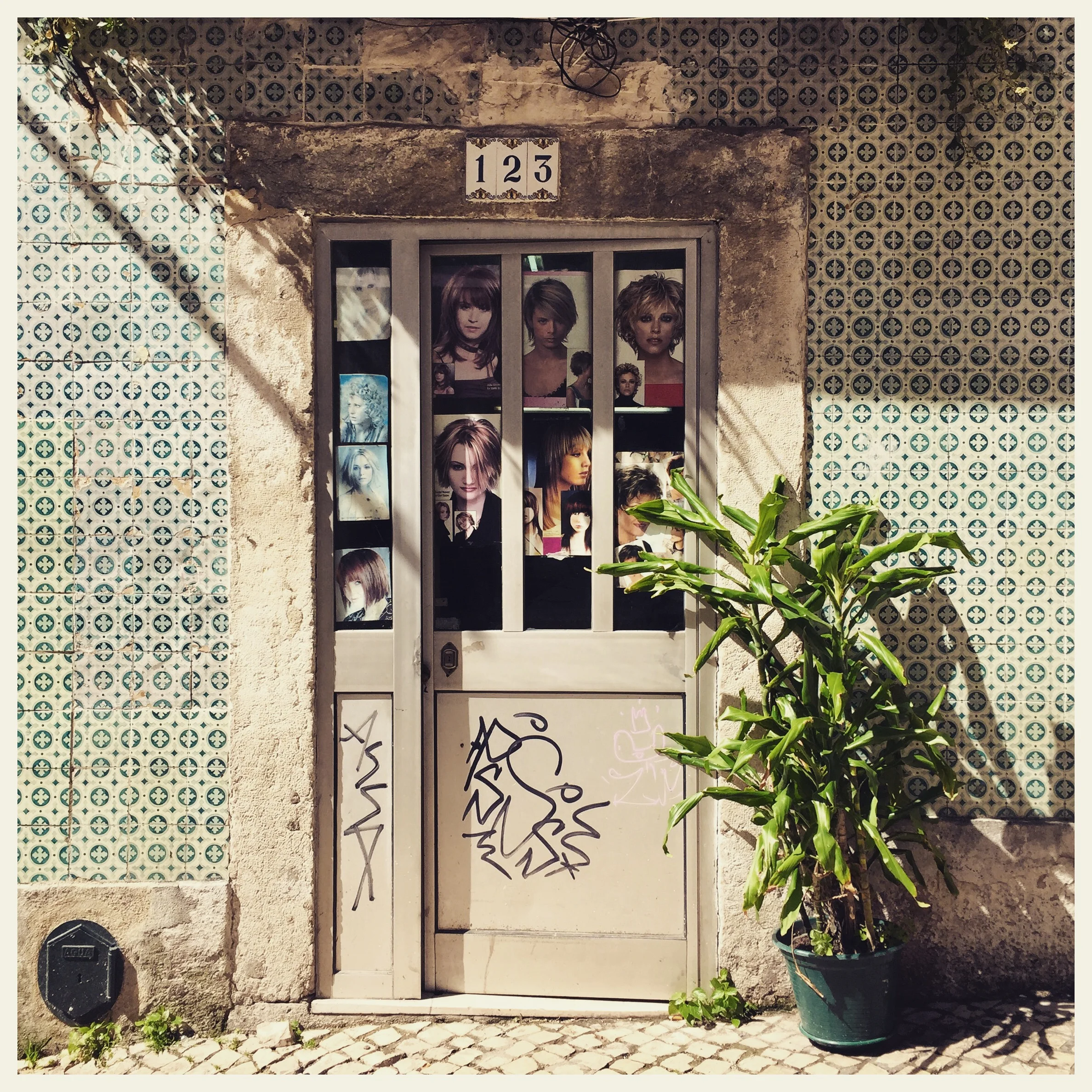Chianti Classico (with a hint of Medici)
Chianti has a bad reputation amongst wine connoisseurs, but the good ones we tried in the area were a revelation. Hannibal Lecter's " fava beans and Chianti" aside, the bad rep is owed to the 70's version which was a harsh red wine in a rustic wicker basket. Today's best Chiantis, which derive their flavour from the Sangiovese grape are herby and complex. It’s all to do with the rooster: the seal that stamps authentic Chianti Classico. The black rooster (Gallo Nero in Italian) encircled in red on gold has to be on the bottle, otherwise it's not the real deal seal. And if you are prepared to part with the higher prices a good rooster bottle will invite, you are probably likely to drink a deep floral red which lingers in your memory of taste.
We preceded our visit to Chianti with a night in Florence where we stayed in the comfortable Residenza Johanna well situated in the old town. This bed and breakfast is part of a small group – Antiche Dimore Fiorentine - that has a series of very well priced boutique bed and breakfasts and apartments across the historical centre of Florence. Our Residenza was decorated like an elegant Florentine home, and had a effervescent manager who sent us to locations still enjoyed by the locals of the town. His tip about restaurants: ‘if they are serving lunch or dinner all day they are for tourists’.
Residenza Johanna
If there is one absolute must in this Medici heartland it is a visit to Michelangelo’s David in the Accademia (book ahead to avoid the longer queues). The iconic David's soft looming grandeur utters the mastery of it's creator. This can only be tangibly felt in the room. The revealing moment of being physically humbled by the scale, precision and honest materiality of David could never be paralleled in the imagination of even the most art savvy connoisseur. Akin to a spiritual pilgrimage, David succeeds to adjust an otherwise modern day need for instant gratification. That's not to say that the selfie sticks were not out selfing in full force, but those that allowed the quiet to permeate, were visibly brought to their knees. We recommend you go for a kneeling.
Our culinary experience in Florence was mixed. We chanced upon Caffè degli Artigiani, it's been the corner shop on Piazza della Passera since 1945 and was, as the name indicates, made for the craftsmen in the area to gather over a coffee or drink after a long work day. Today, it's a favourite local coffee hangout. The coffee lived up to it's "best in Italy" reputation and we recommend the espresso shakerato.
Caffè degli Artigiani
Caffè degli Artigiani was a good counterpoint to the famous but slightly disappointing Gusto Pizza. As pizza goes we would happily give Gusto a miss next time. Our dinner was in the uber-trendy La Ménagère which is a café, restaurant and concept store with a cool, contemporary aesthetic. The dinner was served at a grand long table under the arched space, and the menu pushed at the edges of traditional Italian cuisine. The brave efforts were slightly hit and miss, and we couldn’t help feeling that the turn to fruit in the more traditional dishes was a risky culinary turn. Still, it's certainly a stunning space to go for a drink or a more simple burger on the cafe side of the space. From a design point of view the space is worth a visit especially for a look into a young and edgy Firenze.
La Ménagère Dinner Table
La Ménagère Kitchen
In the morning, we tried both the Mercato Centrale and the Mercato Sant' Ambrogio. The newly curated Mercato Centrale was as charming downstairs as it was alienating upstairs. The homogenized logos and new-world-mall-feel sapped all the authenticity out of this famous space and recreated a bland palatable selection for tourists looking for more of the same. A bit like the Mercado da Ribeira in Lisbon, we couldn’t help feeling something had been lost rather than reinvigorated. The Mercato Sant' Ambrogio on the other hand was entirely local and inviting. Just before the entrance we passed by Sergio Pollini's famous street cart on the Piazza Sant'Ambrogio serving the renowned street food of the town - lampredotto (tripe) with bagnato (bread) - to local and extremely satisfied customers. We weren't quite in the space to consume this for breakfast, although we were tempted to stay for lunch at the famous Trattoria Rocco inside the Mercato. In the end, we settled for a standing good-morning-macchiato with new found friends at La Caffetteria del Vecchio Mercato opposite, uplifted by the perfectly clichéd bar soundtrack, and amazed by the various glasses of wine and Aperol being consumed that early in the morning.
Sergio Polini's Famous Lambredotto Street Cart
Mercato Morning Boys Club with Mrs
With our flying trip of Florence behind us we headed out to nearby Greve in Chianti, driving through hissing undulating vineyards and olive groves on the R222. Chianti has a hint of the Luberon with slightly less austere grandeur, but something is more inviting about the place. Perhaps it is the sense of creative energy, or real world industry that lingers inside the picture perfect hillside vineyards. Certainly the products on offer are a testimony to the work going on around the region. Or perhaps it is our affection for the warmth of the Italian way. Either way, we're coming back for longer.
We stayed in our first Agriturismo in Greve in Chianti, Agriturismo Podere Torre, and we cannot recommend it highly enough.
Podere Torre is a very old Tuscan farm house positioned high on a hill overlooking the Greve valley, even higher than the elegant Villa Bordoni hotel just below. The owners wisely invested in an infinity pool which framed one of the best view spots you'll ever see, and have created a rustic inviting living space above it. We enjoyed two simple nights there eating local produce, drinking Chianti Classico, and staring across the valley from our little terrace. The owner Cecilia, her family and adorable dogs, will make you feel completely at home. They are happy to serve you breakfast in an outside terrace with views across the valley, and their deep sense of quality is evident. We couldn’t have been happier here, and will certainly return for at least a week. This is a serious value location and we urge you to visit.
When we weren’t lazing on our loungers absorbing the sumptuous view, we explored the area around the picturesque town of Radda in Chianti – the centre of the wine growing region. We had word of an art treasure hunt - L'Arte Della Caccia Al Tesoro - showcasing the works of leading contemporary artists mapped through a boutique web of wine cellars in the region.
Our hunt, led us to the Colle Berreto estate which owns the oldest vineyards around Radda. We were treated to a full wine tour of the estate, a view of the Isaac Julian works inside the cellars, a tasting of their delicious wines, olive oils and grappa before heading into Radda to have lunch at the Colle Bereto Cantina which serves delicate local food to go with their wine offerings by the glass. Colle Berreto is so exclusive that you’ll struggle to find it on the shelves of any local wine dealer, although you can visit their two other wine bars in Tokyo and Florence. The manager of the farm suggested we try their Colle B Spumante Classico Brut Rose with our lunch, and we were blown away. This was an unforgettable crisp sparkling rose made from select pinot noir grapes. It was the perfect drink for the intense midday Tuscan heat - and if you ever see it on your travels, buy a bottle or a case.
We’ll return to Chianti very soon, as we’re sure it will keep us busy tasting for a long time. Perhaps we’ll go truffle hunting when the season is in, or indulge in a simple plate of fresh porcini in autumn. One thing is for sure, Chianti has all the romance of its reputation and your senses will thank you for taking them there long after the memory settles.

























